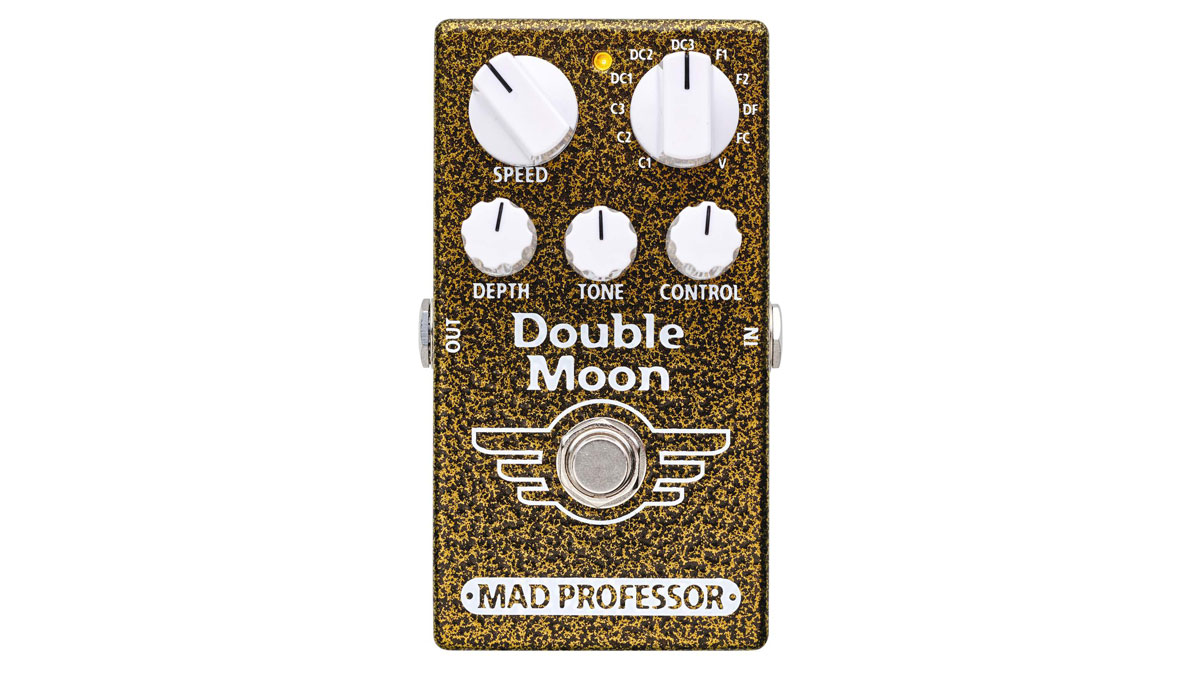MusicRadar Verdict
With a tastefully curated palette of modulation sounds, the Double Moon is an instantly approachable analogue stompbox with a unique modern twist that won’t dominate your pedalboard.
Pros
- +
Multiple high-quality analogue modulation.
- +
Simple operation.
- +
Compact size.
Cons
- -
No stereo output.
- -
Short battery life (DC adaptor recommended!).
MusicRadar's got your back
Today’s effects market does not appear to offer a great deal of variety when it comes to analogue multi-modulation pedals.
Given the ever more affordable and practically dimensionless nature of DSP technology, most pedal builders looking to squeeze multiple modulation effects into a single stompbox unit have opted to go down the digital route. And yet despite designers cramming a virtual rack’s worth of effects into a box often no bigger than its own power supply, many guitarists continue to be inspired by the inherent limitations and simplicity of analogue gear as much as the sounds themselves.
As Mad Professor’s founder, Harri Koski, recently told Guitarist: “There aren’t many multi-modulation pedals this size on the market. DSP effects are popular, but this is a real analogue circuit,” and alongside the dazzling assortment of digital stompboxes now on offer, the compact-sized Double Moon stands out as a welcome addition. While it manages to fill out the analogue multi-modulation void without compromising on pedalboard space, the pedal also does its best to avoid triggering bouts of decision paralysis with an overabundance of options.

Employing the use of old-school bucket brigade circuitry, the Double Moon features 11 distinct modes (selectable via a simple rotary switch) comprising chorus, flanger and vibrato sounds, effectively covering at least a few pedals’ worth of ground, both sonically and physically. A trio of standard controls - Speed, Depth and Tone - allows adequate sound sculpting, while a fourth Control knob offers mode-dependent parameter adjustment, such as LFO wave shape and flanger ‘regen’.
Sounds
In addition to three regular Chorus modes (C1, C2, C3), the pedal boasts three Dual Chorus settings (DC1, DC2, DC3). Both DC1 and DC2 utilise dual delay lines modulated out of phase and are reminiscent of Boss’s Dimension C; DC3 features dual choruses modulating at different speeds.
Flanger modes F1, F2 and DF (Dual Flanger) safely cover most areas of flanging, while the Flanger Chorus (FC) setting offers a unique combination of both effects. A flexible and very sweet-sounding Vibrato (V) mode, inspired by a 1950s Magnatone amp according to Harri, completes the array.
Want all the hottest music and gear news, reviews, deals, features and more, direct to your inbox? Sign up here.
Rod Brakes is a music journalist with an expertise in guitars. Having spent many years at the coalface as a guitar dealer and tech, Rod's more recent work as a writer covering artists, industry pros and gear includes contributions for leading publications and websites such as Guitarist, Total Guitar, Guitar World, Guitar Player and MusicRadar in addition to specialist music books, blogs and social media. He is also a lifelong musician.

